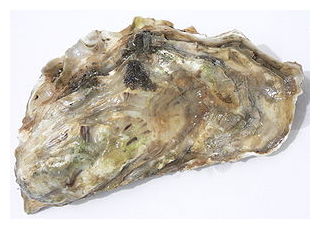
© David Monniaux / Wikipedia
A herpes virus that has devastated North Island oyster farms and so far cost about $12 million in potential sales has shut the pioneering Nelson hatchery that supplies 20 per cent of New Zealand's stock.
No explanation has yet been found for how the virus, which has killed about half of Northland's farmed pacific oysters due for harvest next year, got into the Cawthron Institute's hatchery at The Glen.
But there was nothing to suggest that the hatchery itself, opened with great fanfare in mid-2009, was the source of the outbreak, Cawthron business development manager Mike Mandeno said yesterday.
"It's a temporary setback for us in terms of producing more stock. We'll be trying again at the end of the month."
Juvenile-farmed Northland oysters began dying towards the end of last year and the cause was identified by MAF scientists as a form of herpes which poses no risk to humans but which has been blamed for killing large numbers of oysters in France over the past three years. It is also found in many other countries, including Australia.
Mr Mandeno said Cawthron had hatchery samples tested when the problem was found in the North Island. The virus wasn't detected in the spat, but was found in larvae that had died at the hatchery, and production was stopped.
The larvae were produced following the spawning of male and female oysters at the hatchery, and one of the problems Cawthron faced was in getting brood stock, partly because of movement controls imposed by the industry to try to stop the virus spreading further, Mr Mandeno said.
He said the hatchery could produce 25 million to 50 million pacific oyster spat a year, enough for a fifth of the industry's requirements. The rest is gathered from the wild.
"All spat has been affected by the virus. That has included our spat that we've supplied to customers, but also wild spat in areas that we've never supplied hatchery-bred spat to."
Two staff are employed at the hatchery, and the closure had not affected their employment, he said.
"It's a challenge, but it's one we're very well placed to resolve, and we believe we will resolve it. This is exactly why you need selectively bred oysters, because that's how you develop resistance to these sorts of viruses."
Cawthron did not know how the virus arrived at the hatchery, he said, but neither the evidence nor the pattern of mortality supported the idea that it might have been spread around Northland by hatchery spat.
"The virus has popped up in places that are nowhere near harbours we've sent spat to."
MAF response manager Richard Norman was on leave this week. He said last month that unusually hot weather might have triggered the virus's onslaught. Because it had probably been present in the wild oyster population for many years, it was unlikely it could ever be eradicated.
Aquaculture New Zealand chief executive Mike Burrell said the virus was specific to pacific oysters throughout the world and posed no threat to the mussel industry.
He said the oyster industry was united and had been working closely with the Government and Biosecurity New Zealand on a recovery plan. While the virus caused no food safety issues, "there's far fewer oysters".
"Economically, it's going to be a hard two years ahead. The good news is that we've got the industry working together."
Oyster Industry Association executive officer Tom Hollings said he thought it would have a heavy impact for some time to come. There were about three dozen farming entities with several hundred workers, he said, covering 1100 hectares, and with the losses concentrated on juvenile stock, "the real crunch will come this year". "We're looking at having lost about half the crop. We will be assessing their situation as we come into harvest this calendar year.
"An important thing that we'll look closely at is how we can breed a better oyster," Mr Hollings said. This was where the Nelson hatchery could be instrumental in securing the industry's future.
Pacific oyster farming is the smallest sector of the New Zealand marine farming industry, accounting for 6 per cent of aquaculture exports, worth $16.2 million in 2009. Domestic pacific oyster sales were estimated at $9m. In contrast, mussel exports were $202.5m and salmon $61m.
But oysters are seen as one of the keys to growing aquaculture into a billion-dollar sector by 2025.
Cawthron has been breeding oysters for more than a decade and spent $750,000 developing the hatchery.
Reader Comments
to our Newsletter